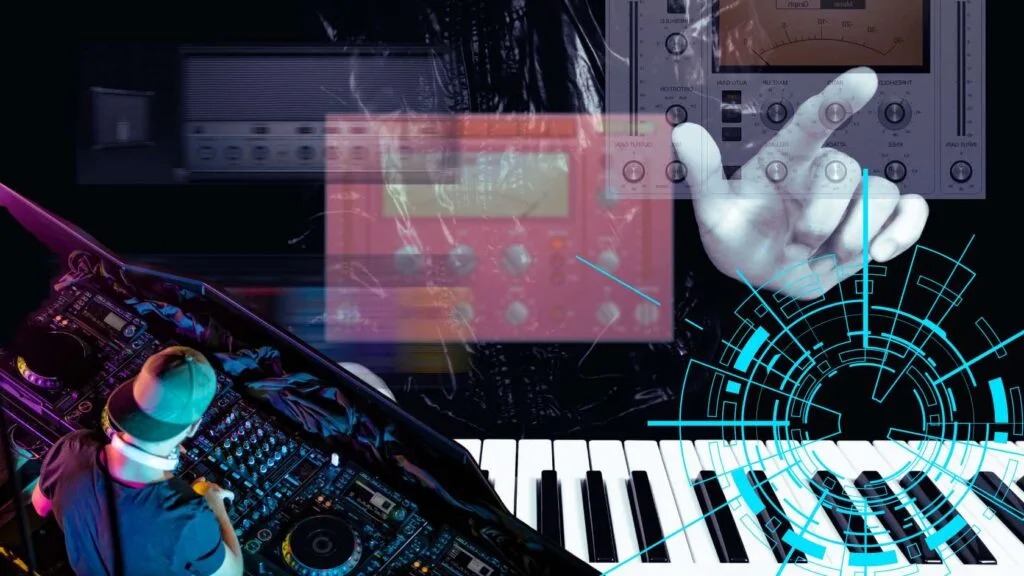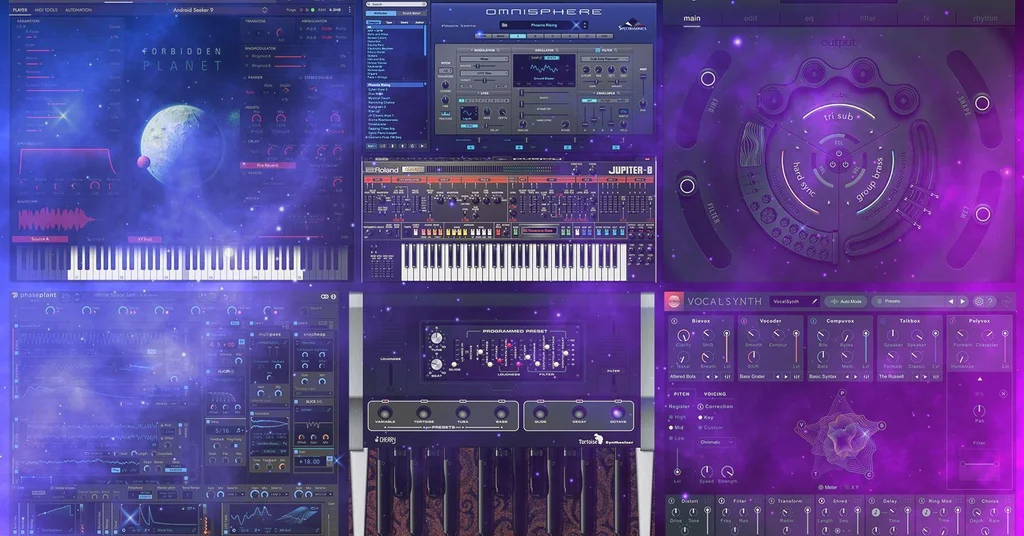Music production has undergone a seismic transformation over the past few decades. From analog tape machines to today’s digital audio workstations (DAWs), the way artists create and manipulate sound is ever-evolving. At the heart of this digital revolution is MIDI (Musical Instrument Digital Interface), a protocol that has not only survived but thrived since its introduction in the early 1980s. Today, MIDI FX—software tools that manipulate MIDI data in real time—are at the forefront of creative innovation, shaping the future of music production and performance
What is MIDI and Why Does It Matter?
MIDI is a protocol that allows electronic musical instruments, computers, and other devices to communicate and synchronize with each other. Unlike audio files, which record sound waves, MIDI files store instructions for how music should be played—note values, velocities, timing, and more. This makes MIDI files extremely small, flexible, and easy to edit.
Key Advantages of MIDI
- Tiny File Sizes: Easily store and share complex arrangements.
- Non-Destructive Editing: Change notes, instruments, or effects without re-recording.
- Real-Time Control: Manipulate every aspect of a performance, from pitch to modulation, on the fly.
- Universal Compatibility: Works across a vast range of hardware and software instruments.
“MIDI sequencing makes it possible for a user with no notation skills to build complex arrangements… complex productions can be realized on a system as small as a synthesizer with integrated keyboard and sequencer.”
The Rise of MIDI FX
What Are MIDI FX?
MIDI FX (effects) are software tools or plugins that process MIDI data before it reaches an instrument or sound generator. Unlike audio effects, which modify sound after it’s generated, MIDI FX alter the instructions that create the sound. Examples include arpeggiators, chord generators, scale quantizers, humanizers, and MIDI-driven modulation effects.
Popular MIDI FX Types
- Arpeggiators: Transform held chords into rhythmic note patterns.
- Chord Generators: Turn single notes into complex chords.
- Scale Quantizers: Force notes to fit a chosen scale, preventing “wrong” notes.
- Humanizers: Add subtle timing and velocity variations for a more natural feel.
- MIDI LFOs/Envelopes: Modulate parameters like filter cutoff or pitch via MIDI CC messages.
Why MIDI FX Are Essential for Modern Music Production
1. Creativity Unleashed :
MIDI FX empower producers to experiment with musical ideas that would be difficult or impossible to play by hand. Chord generators, for example, allow non-pianists to create rich harmonic progressions, while arpeggiators can turn simple chords into intricate, evolving patterns.
2. Workflow Efficiency :
Editing MIDI is faster and more flexible than editing audio. MIDI FX can instantly transform a basic melody into a complex sequence, saving hours of manual programming.
3. Non-Destructive Experimentation :
Because MIDI FX work at the instruction level, you can try new ideas without permanently altering your original performance. Want to hear your melody as a syncopated arpeggio? Just add an arpeggiator FX. Prefer it as block chords? Switch FX, no re-recording needed.
4. Seamless Integration with AI and Generative Tools :
The latest wave of AI-powered music tools often relies on MIDI as a core data format. AI can generate MIDI patterns, harmonies, or even entire arrangements, which can then be further manipulated with MIDI FX for unique results.
5. Live Performance Power :
MIDI FX aren’t just for the studio. Performers use them live to trigger complex sequences, modulate parameters, and improvise in real time, all while keeping performances tight and expressive.
How MIDI FX Are Shaping the Future
A. The AI Revolution in Music :
The integration of AI with MIDI is opening new creative frontiers. AI tools can analyze and generate MIDI data, suggest harmonies, or remix performances on the fly. Producers can use MIDI FX to further refine or humanize these AI-generated ideas, blending machine precision with human artistry.
“The study concentrates on the opportunities and risks of AI in the music sector… It examines AI’s impact on the creative process of music, also encompassing aspects such as recording, editing, mixing, mastering, as well as marketing, promotion, and distribution.”
B. Cross-Platform Collaboration :
MIDI’s universal language makes remote collaboration easier than ever. Musicians can share MIDI files and FX presets, ensuring that creative intent is preserved across different studios, DAWs, and even continents.
C. Accessibility and Democratization :
MIDI FX lower the barrier to entry for new producers. You don’t need years of training to create complex music—MIDI tools and FX handle the technical heavy lifting, letting creativity take center stage.
Case Studies: MIDI FX in Action
1. Pop Production :
Producers like Max Martin have used MIDI FX to craft chart-topping hits, layering arpeggiators and chord generators for infectious hooks.
2. Electronic Dance Music (EDM) :
Arpeggiators and scale quantizers are staples in EDM, allowing producers to create driving, hypnotic patterns that define the genre.
3. Film Scoring :
Composers use MIDI FX to quickly sketch out orchestral arrangements, testing different harmonies and articulations before committing to a final score.
Integrating MIDI FX Into Your Workflow
Step-by-Step Guide :
- Choose Your DAW: Most modern DAWs (Ableton Live, Logic Pro, FL Studio, Cubase) support MIDI FX either natively or via plugins.
- Load a Virtual Instrument: Insert a software synth or sampler.
- Add MIDI FX: Insert MIDI FX plugins before the instrument in your signal chain.
- Experiment: Try different FX combinations—arpeggiators, chord generators, humanizers.
- Edit and Automate: Tweak parameters and automate changes for dynamic results.
- Export or Record: Once satisfied, render your MIDI performance as audio or keep it as MIDI for further editing.
Recommended MIDI FX Plugins
- Cthulhu by Xfer Records: Chord generator and arpeggiator.
- Scaler 2 by Plugin Boutique: Scale and chord detection, performance FX.
- Kirnu Cream: Advanced arpeggiator with pattern sequencing.
- Logic Pro MIDI FX Suite: Includes arpeggiator, chord trigger, modulator, and more (native to Logic Pro).
The Next Decade: Where Are MIDI FX Headed?
1. Deeper AI Integration
Expect smarter MIDI FX that use machine learning to suggest chord progressions, generate melodies, or adapt to your playing style in real time.
2. Enhanced Expressivity
New MIDI standards like MIDI 2.0 promise higher resolution and more nuanced control, enabling even more expressive performances and FX possibilities.
3. Cloud-Based Collaboration
Cloud platforms will allow producers to share MIDI FX setups and collaborate on projects in real time, regardless of location.
4. Mobile and Touch Interfaces
Touchscreens and mobile devices will make MIDI FX more accessible, letting anyone create and manipulate music on the go.
Conclusion: MIDI FX Are Here to Stay
MIDI FX have transformed how music is created, performed, and shared. Their ability to unlock creativity, streamline workflows, and integrate with emerging technologies like AI ensures they will remain at the core of music production for years to come. Whether you’re a seasoned pro or just starting out, embracing MIDI FX means embracing the future of music.
Further Reading
- [What is MIDI? The Basics, Benefits, Uses, & Applications in Music Production]
- [What Is MIDI? The Best Tool for Modern Music Production]
- [MIDI – Wikipedia]



